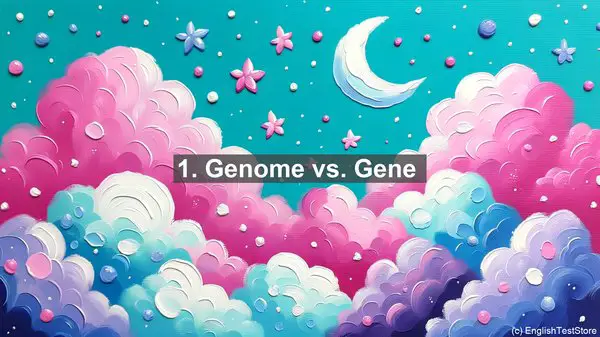Introduction: The Importance of Clear Terminology
When it comes to studying viral genetics, understanding the correct terminology is crucial. In this lesson, we’ll explore ten commonly confused words in this field, ensuring you have a solid foundation for your studies.
1. Genome vs. Gene
The genome refers to the complete set of genetic material in a virus, while a gene is a specific segment of that material. Think of the genome as the entire library, and genes as individual books within it.

2. Mutation vs. Variation
A mutation is a permanent change in the genetic material, often resulting in a new trait. Variation, on the other hand, refers to naturally occurring differences in the genetic makeup. While mutations can lead to variation, not all variations are caused by mutations.
3. Recombination vs. Reassortment
Both recombination and reassortment involve the exchange of genetic material between different viruses. However, recombination occurs when two related viruses exchange segments, while reassortment happens when two different viruses mix their entire genome segments.
4. Epidemic vs. Pandemic
An epidemic is the rapid spread of a disease within a specific region or community. A pandemic, on the other hand, refers to a global outbreak, affecting multiple countries or continents. While all pandemics are epidemics, not all epidemics are pandemics.

5. Vector vs. Reservoir
In the context of viral diseases, a vector is an organism that transmits the virus from one host to another, such as a mosquito. A reservoir, on the other hand, is a natural habitat where the virus persists, such as a bat. While vectors actively transmit the virus, reservoirs serve as a long-term source.
6. Zoonotic vs. Anthroponotic
Zoonotic diseases are those that can be transmitted from animals to humans, like the recent COVID-19 outbreak. Anthroponotic diseases, on the other hand, are primarily transmitted between humans. Understanding the source of a disease is crucial for effective control measures.
7. Endemic vs. Epidemic
An endemic disease is constantly present within a specific region or population, often at a low level. In contrast, an epidemic refers to a sudden increase in the number of cases, exceeding what is normally expected. Endemic diseases may occasionally experience epidemics.
8. Host vs. Carrier
A host is an organism that harbors the virus and may exhibit symptoms. A carrier, on the other hand, is an individual who carries the virus but remains asymptomatic. Carriers can unknowingly transmit the virus to others, making them potential sources of infection.
9. Incubation Period vs. Latent Period
The incubation period is the time between infection and the onset of symptoms. In contrast, the latent period refers to the time between infection and the ability to transmit the virus. Some viruses, like herpes, can have a prolonged latent period.
10. Isolation vs. Quarantine
Isolation is the separation of individuals with a contagious disease from others to prevent transmission. Quarantine, on the other hand, is the restriction of movement for individuals who may have been exposed to a contagious disease, even if they are not yet showing symptoms.
